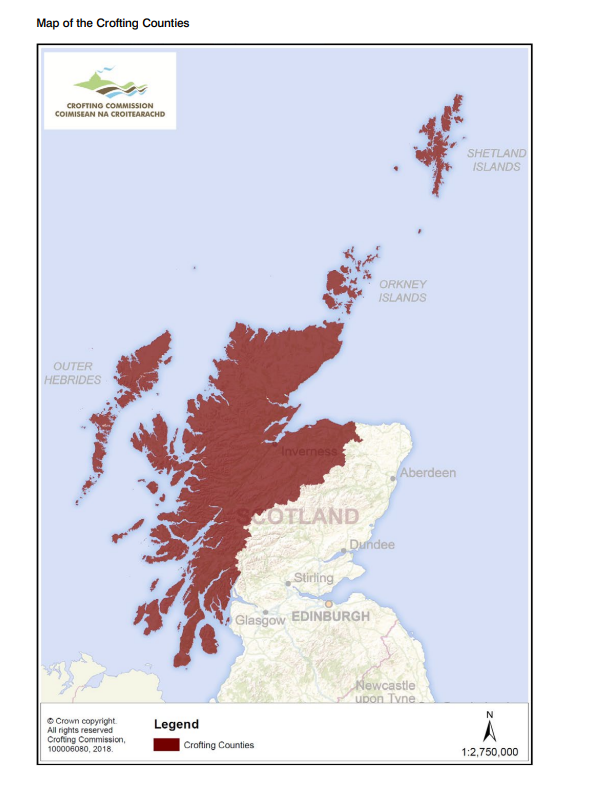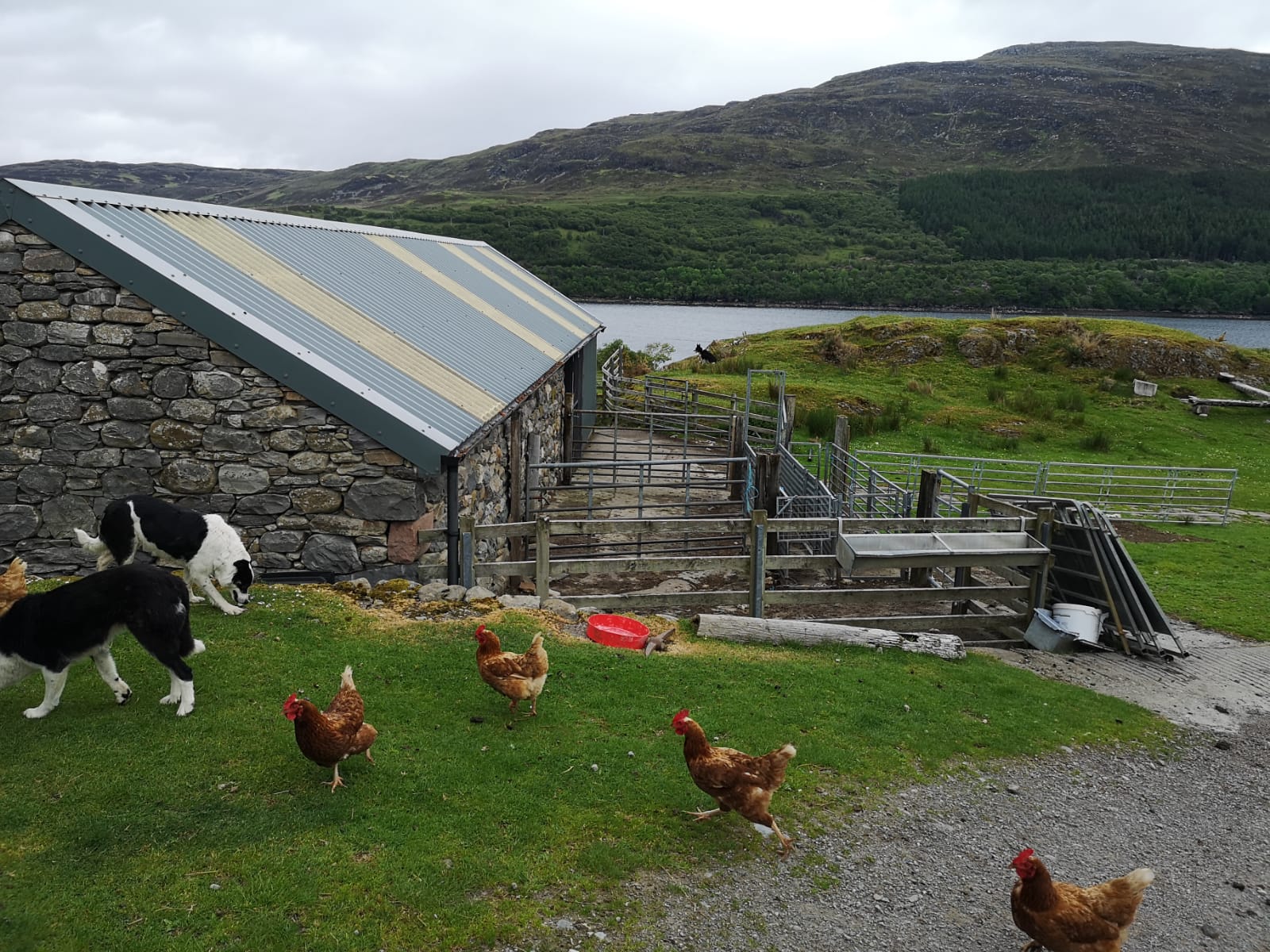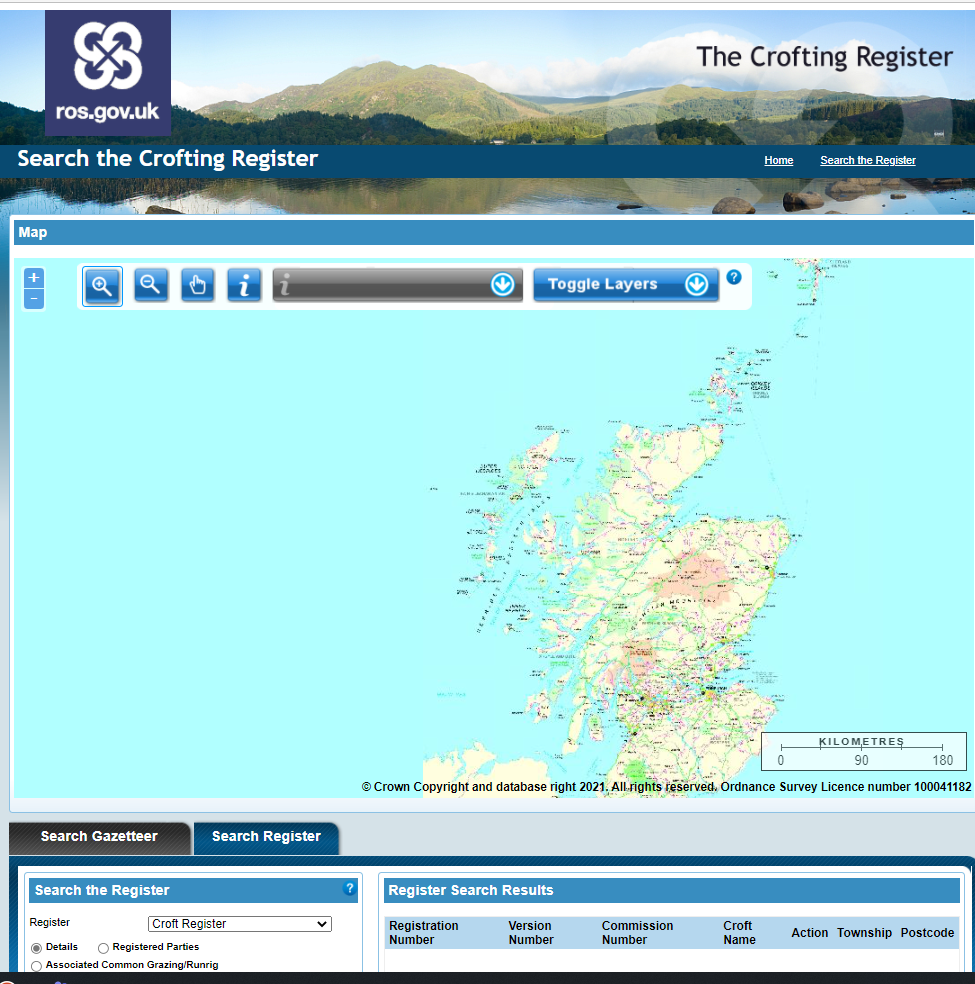
and promotes the interests of crofting in Scotland
to secure the future of crofting.
What is Crofting?
Crofting is a system of landholding, which is unique to Scotland, and is an integral part of life in the Highlands & Islands. Crofting can deliver a wealth of benefits to crofters and the crofting communities. There are around 20,000 crofts across the crofting counties, which are in the Highlands & Islands and in designated areas in Scotland. More than 750,000 hectares of land in Scotland is in crofting tenure, with approximately 33,000 people living in crofting households.

A croft is a relatively small agricultural land holding, which is normally held in tenancy, and which may or may not have buildings or a house associated with it. Crofts range in size from less than 1/2 hectare to more than 50 hectares, but an average croft is nearer 5 hectares.
Crofting has had its own specific legislation since 1886, ensuring security of tenure, fair rents and compensation for permanent improvements. The Crofters Holding Act of 1886 also provided the right to bequeath the croft tenancy to a member of a crofter’s family. Later legislation provided other rights to crofters, such as the right to assign a croft tenancy, subject to approval, to a person of their choice or indeed to purchase their croft.
Crofters also have responsibilities defined in legislation which include:
• A duty to be resident on or within 32 kilometres of their croft
• A duty not to neglect their croft
• A duty to cultivate and maintain their croft or to put it to another purposeful use

Common Grazings
Common grazings are areas of land used by a number of crofters and others who hold a right to graze stock on that land. There are over 1,000 common grazings covering over 500,000ha across the crofting counties.
The crofters sharing in a common grazing normally appoint a Grazings Committee at a public meeting to maintain, manage and improve their common grazing. A Grazings Committee administers the Grazings Regulations and may amend or submit new regulations to be confirmed by the Crofting Commission.
Souming: The Grazings Regulations specify the number and type of stock each crofter can put on the grazings and this is known as the souming.
Why is Crofting Important?
Culture: Generations of crofters had to work closely together to complete many vital crofting activities, and this resulted in a strong culture of community and common purpose, which is evident to this day. Crofting and its association with land and place is important to preserving both Gaelic and Nordic cultural heritages in the Highlands and Islands.
Community: Crofting plays an important role in many aspects of life in the Highlands and Islands. Croft land has provided the basis for the pattern of settlement and township structure. The association with common grazings has entailed sharing a resource and co-operative working, which in turn provides for shared responsibilities and sense of identity.
Rural Economy: A croft provides a base for crofters and their families to reside on, utilising the land for agriculture and other enterprises. Crofting can be readily combined with other means of employment.
Land & Environment: The crofting system of diverse, smallscale, high nature value agriculture and low intensity grazing, contributes significantly to the environment, landscape, ecology and biodiversity of the crofting counties.
Register of Crofts (ROC)
The ROC is a public list of crofts maintained by the Crofting Commission, which contains basic information about the croft and the people associated with it. There are just over 20,500 crofts entered on the Commission’s Register of Crofts (ROC) of which around 72% are tenanted and the remainder are owned.
To visit the Register of Crofts online, please click this hyperlink Register of Crofts (ROC) | Crofting Commission (scotland.gov.uk)
The ROC can be searched by the name of the holding or the individual and holds the following information;
- Register Number
- Main Location Code
- Total Area (unconfirmed if croft not registered)
- Croft Type
- Croft Status
- Crofter Status
- Crofter
- Landlord
- Grazing Share
The ROC does not contain boundary information or maps for crofts, as this is held by The Registers of Scotland.
The Registers of Scotland: The Crofting Register
The Crofting Reform (Scotland) Act 2010, required the Keeper of the Registers of Scotland to establish and maintain a free to search, public register of crofts, common grazings, and land held in runrig. This register is map based, unlike the Commission's Register of Crofts.
Registration of a croft in The Crofting Register is required on certain events which are known as trigger events. To see more information on these events, click on the hyperlink; "trigger events". Voluntary registration of individual crofts, or groups of crofts in a township, is also encouraged.
To visit the The Crofting Register online, please click this hyperlink Crofting Register (ros.gov.uk)
Regulatory Applications
Crofts and common grazings are a valuable resource, which should be available now and in the future, for existing crofters and new entrants to crofting, to be able to use productively.
In order to make changes to their croft, crofters are required to submit Regulatory Applications to the Crofting Commission for consent. To find the correct application or notification form please use our form finder by clicking this hyperlink Form Finder
Details of other organisations, which offer help and assistance to crofters, can be found by clicking on the hyperlink; “Where do I get help”

